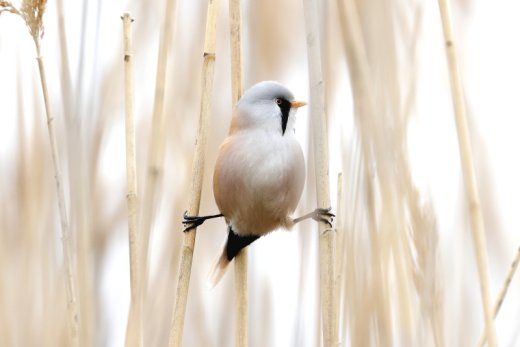2023-05-17
Protecting our nature is a common responsibility all over the world and the three biggest Hungarian environmental NGOs, including WWF, launched a public initiative to establish the Day of Hungarian Nature, which we celebrate on 22 May. Furthermore, on this day the Bird of the Year, the Reptile and Amphibian of the Year, and the Butterfly of the Year are introduced for the people to raise awareness of the natural values of Hungary.
Hungarian Nature Day has been celebrated in Hungary since 2014 to raise awareness of the importance of the country’s natural values. This day is also World Biodiversity Day, which was launched by the Hungarian Ornithological and Nature Conservation Association (MME), the Hungarian Association of Nature Conservationists (MTVSZ), and WWF Hungary. The legislative environment that ensures the protection of Hungarian and European natural values is important for their conservation.
Hungary has an impressive natural heritage, as demonstrated by the fact that three areas have been awarded the highest European recognition for protected areas, the Diploma of Europe which is awarded by the Council of Europe Committee of Ministers. The current list of 73 designated sites in 29 countries includes 3 areas in Hungary.
One of them, the volcanic formations of the Tihany peninsula – with its rare onshore spring cones and geyser fields indicating former volcanic activity – became the country’s first landscape protection area in 1952 as part of the Balaton-Highlands National Park. The second was the fossilized remains of the 8-million-year-old marsh cypress in Ipolytarnóc, which was awarded the title in 1995. Here, 20 million years ago, a volcanic eruption destroyed the flora and fauna of the time but also preserved the evocative relics of a bygone era. In a unique way in Europe, the footprints of animals (raptors, birds of prey, rhinoceroses, small ungulates) walking and crawling along the muddy river banks, the impressions of their tides, and even the traces of the raindrops that fell at the time have been preserved as a snapshot. Leaf prints and fossilized tree trunks embedded in the rocks help us to reconstruct the lush vegetation of the past.
The Szénások is a popular destination for hikes in the Buda Hills, and the National Blue Trail passes through part of them. The area is remarkable not only because of its geology and landforms, but also the world’s only Pilis flax is found on its rocky slopes, especially on the slopes of the Small and Great Szénás. The Szénás group of mountains in the vicinity of Nagykovácsi was also awarded the European Diploma and the protection.
In connection to the Hungarian Nature Day, Later, on the same day, the Hungarian Ornithological and Nature Conservation Society (MME) launched the Bird of the Year poll in 1979, later the Reptile and Amphibian of the Year polls, and most recently the Butterfly of the Year poll. Last year’s professional and public votes resulted in the 2023 Bird of the Year being the Barred Flycatcher (Panurus biarmicus), the Alpine Newt (Ichtyosaura alpestris formerly Triturus alpestris) and the Butterfly of the Year being the Swallowtail Butterfly (Papilio machaon).

Photo: Zoltán Orbán (MME)
The first indication of the presence of Barred Flycatchers (Panurus biarmicus), is often their distinctive ‘ringing’ group bonding call, which helps to keep individuals in contact in dense reed beds. They spend their entire life in the reedbed vegetation of natural and artificial ponds, marshes, floodplains, and other water bodies. Because of its nesting habits, it is particularly fond of extensive reed and sedge margins, up to several kilometers wide, where it finds several years old reed patches in the sheltered (unharvested) interior or in the narrow-leaved sedge.
Since 2012, the amphibian or reptile of the year has been chosen by the MME Amphibian and Reptile Conservation Section, rather than by public vote. The alpine newt is one of the rarest amphibian species, occurring as an island in small lakes and ponds in the cool, wet microclimates of the Hungarian central mountains. It is protected and has a conservation value of HUF 100 000. It usually emerges from its wintering grounds at the end of March or the first half of April and almost immediately moves to its nesting grounds.
One of the most iconic Hungarian daytime butterflies is the winner of the Butterfly of the Year. The Swallow-tailed Butterfly is a very widespread species worldwide, inhabiting almost the entire northern hemisphere. In Hungary, it is more common in the mountain and hilly areas.

Photo:Ádám Gór (MME)
It starts to fly at the end of March or early April when the first major warm spells arrive and has become very scarce in some areas due to the late cold or even frosty days of recent years and intensive chemical use.
If you want to know more about these areas and the animals, even if you want to see them, join some hiking groups or follow the news of the above-mentioned NGOs.
Sources: Magyar természet, Csodálatos Magyarország, Qubit , A kövek mesélnek









